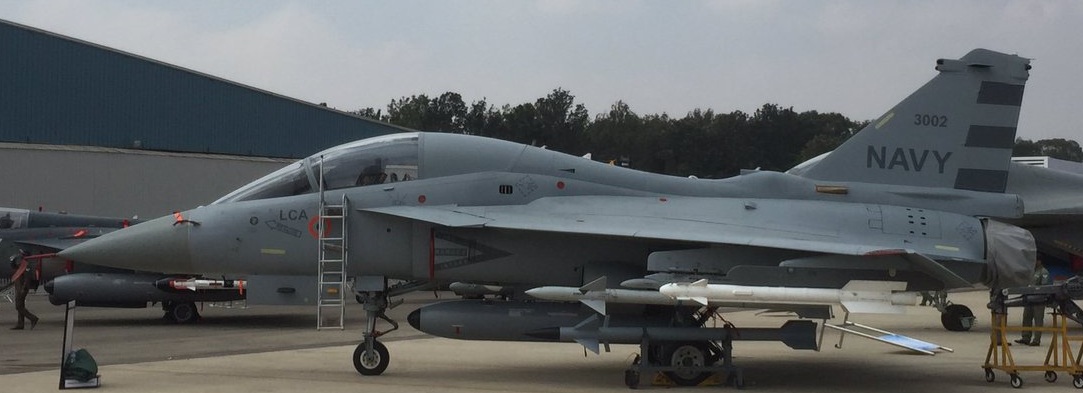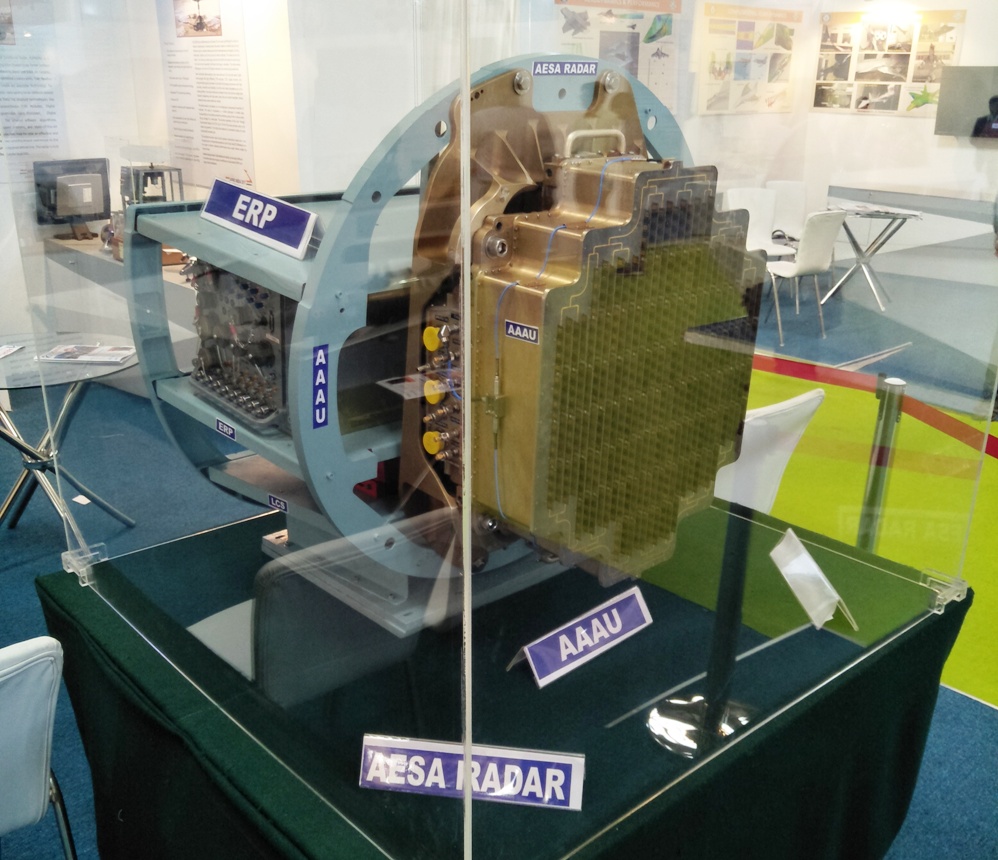
On Tuesday here at the Aero India show, Defence Minister Manohar Parrikar added the latest in what has been a series of nails in the coffin of the troubled LCA Navy, the carrier version of India’s in-service LCA Tejas. By now, the LCA Navy team in Bengaluru had gotten round to the reality that a paper plane that began in 2003 wouldn’t ever be an operational jet with a customer. Parrikar cajoled the team separately, assuring them that the government had no plans to pull the plug, and that the good work the team at the Aeronautical Development Agency (ADA) had done for over a decade would not go to waste. But the reality wasn’t going anywhere. All that work on the LCA Navy Mk1 wouldn’t result in sales of the aircraft. It would be forever be a technology demonstrator.
The last six months have brought headwind way beyond what this little jet was built for. But beyond the claimed stoicism of continuing endlessly with a project nobody wants, there’s a reality that has gone unreported so far. A reality that provides the first solid glimmer for a project that’s as good as dead but for an honour lifeline from the Department of Defence Production. And here’s the thing: it isn’t pity at all. Livefist met with ADA chief Commodore C.D. Balaji for what he described shortly after as the frankest chat he’s had on the subject. And at the centre of the LCA Navy’s struggle for relevance is a solid kernel of hope.
The ADA has opened dialogue with the Indian Navy with the hope that its customer will come round to the view that the LCA Navy Mk.2 will be a sensible graduated step to the big twin engine jets it finally wants to operate. “The LCA Navy Mk.2 would be a great stepping stone,” Balaji tells Livefist. And he’s backing his pitch with a solid timeframe.
‘We’re aiming for a first fl ight of the LCA Navy Mk.2 in late 2020 or early 2021. The detailed design will be complete by 2019. To save time, we’ve already ordered raw materials required,’ Balaji says. Two GE F414 engines — one for the AF prototype and one for the LCA Navy — arrived earlier this month, the first batch of eight engines contracted from GE for the Mk.2 programme. That the LCA Navy will be a more powerful combat jet is well known. What Livefist has now discovered from the team is that there are design and engineering improvements being effected on the LCA Navy Mk.2 that could prove deal-maker if they work out.
ight of the LCA Navy Mk.2 in late 2020 or early 2021. The detailed design will be complete by 2019. To save time, we’ve already ordered raw materials required,’ Balaji says. Two GE F414 engines — one for the AF prototype and one for the LCA Navy — arrived earlier this month, the first batch of eight engines contracted from GE for the Mk.2 programme. That the LCA Navy will be a more powerful combat jet is well known. What Livefist has now discovered from the team is that there are design and engineering improvements being effected on the LCA Navy Mk.2 that could prove deal-maker if they work out.
For starters, the team plans to move the wings outboard by about 350mm, increasing the space significantly between the fuselage and the wings. This would immediately optimise load transfer (the ADA has had weight issues with the landing gear) and free up the central fuselage for fuel. ‘We believe the change will free up space for up to 700 kg additional fuel, providing about 22 minutes of additional time on task,’ Balaji tells Livefist. That’s huge for the tactical envelope the LCA platform was developed for.
But there’s a great deal of work left on the LCA Navy Mk.1 before the Mk.2 can begin taking shape. In the immediate future this summer, the LCA Navy Mk.1 prototypes will begin ‘taxi i n engagement’ drills, where the jets are throttled on ground into the arrester wire at Goa’s Shore Based Test Facility (SBTF) to exercise structural compatibility for a hook. The tests have been delayed three months thanks to a damper failure during field carrier landing practice (FCLP) dummy approaches last year.
n engagement’ drills, where the jets are throttled on ground into the arrester wire at Goa’s Shore Based Test Facility (SBTF) to exercise structural compatibility for a hook. The tests have been delayed three months thanks to a damper failure during field carrier landing practice (FCLP) dummy approaches last year.
‘Our focus with the Mk.1 is carrier suitability. We’ve got a good handle on carrier ops. Control laws have matured well, and sit right on top of our simulations. Deck recoveries are a different challenge and there are several lead-up activities planned,’ he says.
The ADA has built a new test rig to test horizontal and vertical loads during a deck recovery, including 7.1 m/s sink rate and the 45 ton load on an arrester wire. ‘Structurally, everything checks out,’ Balaji says, adding, ‘We are doing more dummy approaches to fine tune our control laws. Want to narrow everything down so we have very predictable landings.’
Balaji smiles when pushed on the question of the Mk.1 and whether they are hoping for anything to come of it. ‘Saab has a Sea Gripen concept. They are in the same stage we were at in 2003 when we decided to create a carrier-capable derivative of the LCA Tejas. We have proven many technologies. The LCA Navy Mk.2 will incorporate every lesson we could possibly have learnt,’ he says.
There’s activity on the radar front too. Balaji’s team will be freeing up LCA Tejas LSP-2 shortly for ground integration of India’s indigenous Uttam AESA radar. The ADA has asked the DRDO’s LRDE lab to keep the Uttam’s interfaces as similar as possible to the current Israeli Elta radar . ‘It will be a challenge, moving from a mechanically scanned radar to the AESA without interface changes but that is the attempt, to save time and forestall any structural changes to the aircraft or sensor,’ says Balaji. Interestingly, since the LCA doesn’t have an integrated liquid cooling system necessary for an AESA radar, the team has suggested that a small auxiliary compartment that becomes redundant after the mechanical-to-AESA switch could be utilised to house a liquid cooling system.
. ‘It will be a challenge, moving from a mechanically scanned radar to the AESA without interface changes but that is the attempt, to save time and forestall any structural changes to the aircraft or sensor,’ says Balaji. Interestingly, since the LCA doesn’t have an integrated liquid cooling system necessary for an AESA radar, the team has suggested that a small auxiliary compartment that becomes redundant after the mechanical-to-AESA switch could be utilised to house a liquid cooling system.
A full scale model of the LCA Navy Mk.2 will be ready by early next year. Commodore Balaji and his team now hope their case will have a firm taker in the Indian Navy by then.
The LCA Tejas is also the target this year of a slew of offers for comprehensive sensor/weapons upgrades, with at least three big firms detailing their packages at this year’s Aero India show. While Livefist has reported on Saab’s offer before, this year Raytheon and Israel’s Rafael have drawn out their own. Here’s a look:


It is time HAL is split into three separate entities , one which will work very closely with DRDO to develop new Engines, avionics, radars, jamming pods , etc for aircraft , One which will independently test and develop further / integrate equipment developed by DRDO and one that is exclusively into serial production of the various types of aircraft
Who knows that IN may be back after they are not able to find a naval fighter of their specs in the world markets at price they want to pay.
So continue work on it. I am sure India Navy is pulling a fast one, over Government eyes but when they figure out that, other than F18, which requires steam catapult, no other plane is suitable, they will be back. Gripen and Rafale Naval are unproven naval fighters, these are pricey and look good on paper.
can we by any chance have a good looking photo of tejus — non of the earlier ones are good looking
This is extremely great news, and veritably demonstrates the sincere dedication of the scientists & engineers at DRDO. Just because a half-drunk Naval commander/Admiral said that they don’t like the N-Tejas and are lusting after foreign jets, the DRDO did not give up!
I’m sure that the N-Tejas will meet or surpass all the expectations, after getting retrofitted with the more powerful GE F-414 engine, as also structural modifications. It’s range-ayload specifications, which are already much superior to those of the Sea-Harriers, will imrove even more.
Finally, if those tottering Sea-Harriers could be utilized by the Navy for so long, why not Tejas, which is orders of magnitude superior to the Harriers?